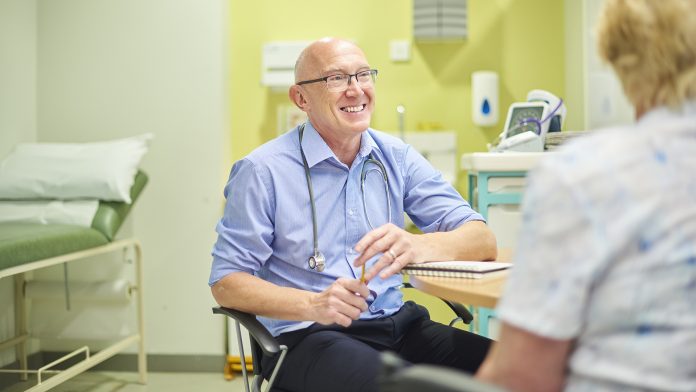
Researchers have developed a new tool for doctors to identify high-risk patients and improve fall prevention.
A team of experts from the Nuffield Department of Primary Care Health Sciences and the University of Oxford collaborated on a tool that will help GPs predict serious falls in elderly patients and also with fall prevention. The research was published in The BMJ and funded by the Wellcome Trust, Royal Society and National Institute for Health and Care Research (NIHR), used 20 years’ worth of data from 1.7 million anonymous healthcare records, and checked its accuracy against separate database of almost four million healthcare records.
In England, around 235,000 hospital admissions for people over 65 are due to falls, costing the NHS an estimated £2.3 billion.
Dr Constantinos Koshiaris, Senior Medical Statistician in the Nuffield Department of Primary Care Health Sciences at the University of Oxford, who developed the tool, said: “In the past, we have struggled to identify people at risk of falling in the community. Previous fall-risk tools were not very accurate and in some cases, had methodological flaws. Our new ‘STRATIFY-Falls’ tool can predict which patients are most at risk of falling in the next one to ten years. This could allow GPs to provide more personalised care and the target falls prevention strategies for patients, such as exercise-based interventions or drug reviews.”
The burden of falls on patients and health systems
The risk of a serious fall increases as people age and develop chronic medical conditions. Many factors influence the risk of falling, including pre-existing illness or frailty. One influential factor that doctors can control is the amount and type of medications prescribed, such as blood pressure medications.
Blood pressure medications can be effective in preventing diseases such as stroke or heart attacks. However, these drugs are capable of lowering blood pressure too far, leading to fainting or falling. The effect is highly common in people changing positions from sitting to standing.
Professor Richard McManus, practising GP and Professor of Primary Care Research at the Nuffield Department of Primary Care Health Sciences, University of Oxford said: “GPs often have to balance the risks and benefits of medications for specific conditions, such as high blood pressure, against the potential risk of adverse events such as falls. Having reliable tools to estimate people’s individualised risk of falling and change their medication to lower this risk would be very welcome. This kind of tool could in time be built into GP records systems to automatically flag such patients.”
Falls significantly impact the quality of life. In people aged over 65, fractures which result from falls can often signal the point at which they may not be able to live alone without care.
Fall prevention tool for GPs to alleviate pressure
The researchers used a database of over 1.7 million healthcare records from GP surgeries in England between 1998 and 2018, the Clinical Practice Research Datalink (CPRD), to create the fall prevention tool.
The team linked the data from hospitals and identified over 60,000 aged 40 and above who were prescribed at least one high blood pressure measurement and also experienced one or more serious falls during the study period (that required hospital treatment or led to death). The information was used to create a model of the factors that may predict people’s risk of falling ten years following a high blood pressure measurement, helping GPs with fall prevention support. They included factors such as gender, ethnicity, prescribed medications, alcohol usage, and smoking.
Dr Lucinda Archer, lead author on the publication and Lecturer in Biostatistics at the Centre for Prognosis Research, School of Medicine, Keele University, said: “We discovered that a history of previous falls, having a diagnosis of multiple sclerosis, heavy alcohol consumption, a high deprivation score, and prescribed drugs were all strong predictors of fall risk, conditional on other variables in the model. The tool we developed considers all these factors, and more, to determine an individual’s risk of falling over the next one to ten years.”
The team also tested the model against a second set of CPRD data for the same period, which included four million records.
Lucinda continued: “After some minimal tweaks, we found the new tool’s predictions were very accurate at differentiating between groups of high and low-risk patients.”
The tool can now be used and one day will hopefully be implemented by GPs to help with fall prevention strategies for at-risk patients.
























